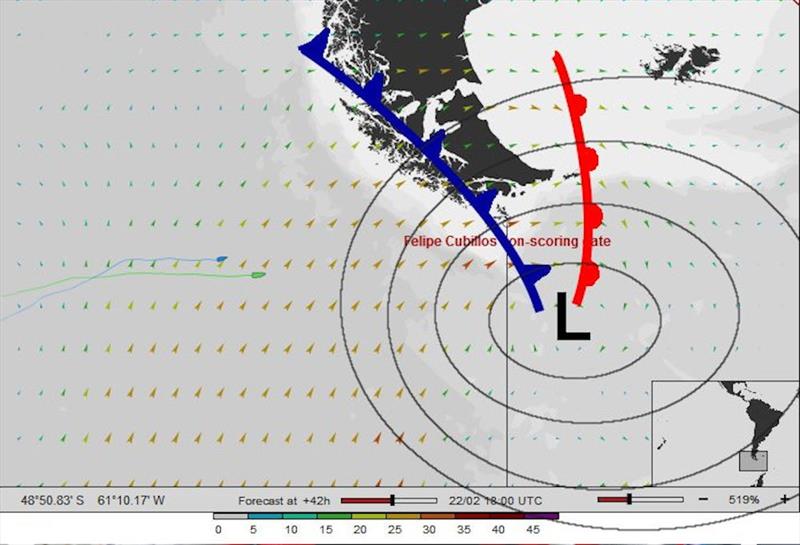
Global Solo Challenge: What is the most dangerous sector in a low pressure system?
by Global Solo Challenge 13 Aug 2022 06:41 PDT

A deep low by Cape Horn. GOR 2011/2012 © Global Solo Challenge
Perhaps one of the worst circumstances that a sailboat can face on the high seas is to find itself immersed in a tropical cyclone.
These phenomena normally have fairly defined seasons; occur in latitudes or areas that are well marked in the nautical bibliography, and their evolutions and directions are usually marked by relatively well-known patterns. But they can always surprise us with formations of severe intensity where they have not normally occurred or they can behave with "strange" behavior.
Sailors and their boats, and even more so those who sign up for events such as the Global Solo Challenge (GSC), must be prepared to be able to withstand all kinds of storms on the high seas, whatever their nature. Squalls, deep low pressure associated with fronts creating very strong and sudden stormy showers in calm areas can be as damaging, for the boat and the skipper, as a cyclone. Additionally, the sea can always surprise us with more power, more wind, and more waves than anticipated. When one finds oneself in the middle of storms of any kind, one never knows for sure how long they will last and to what extent the power with which they are going to express themselves will reach. For those sailing, it always seems that it blows with more intensity than what the forecasts predicted.
An interesting phenomenon happens to us as conditions go from extreme to less extreme. You start sailing with a 35-knot wind and rough sea and it seems rough. Then conditions increase to a 50-knot wind and rough sea and that seems rough. But then, as when you sail in those conditions for a time and it starts to die down, the 35 knots, that seemed rough before, seem like a gift and give you the feeling of sailing in "normal" conditions...
Tactics and foresight will always be the first tool we have in order to be able to minimize the harshest or most dangerous situations of any storm at sea, to the extent possible. All different storms require their tactics; their ways of anticipating and following them; how to prepare the ship and get things ready. Although it is difficult for us to completely eliminate getting a thrashing from the storm; the best prevention is to be as fully prepared as possible for the moment it reaches us. The boat is prepared both inside and outside for when the storm will hit. There can be different preparations depending on the situation in which we find ourselves. It is not the same on the high seas, far from nearby land, compared with a nearby coast especially if it is downwind. Each situation will determine the decisions to be made.
In the case of tropical cyclones, and following the information that reaches us on board the meteorological stations, it is usually possible to follow the trajectory of the storm. This information and the position of our ship will allow us to evaluate the risks we face and will help us to know what situation we are in with respect to the storm and the tactics that we must adopt.
Continue reading the full article here...